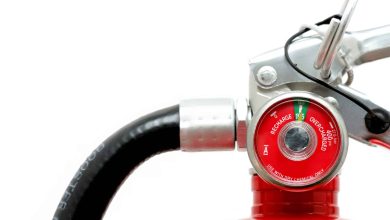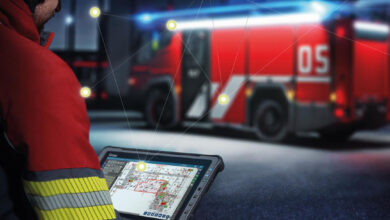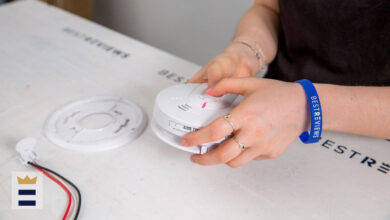Fire extinguishers: Everything you need to know before you buy one
One of the most important safety tools in your home is also one of the least understood.
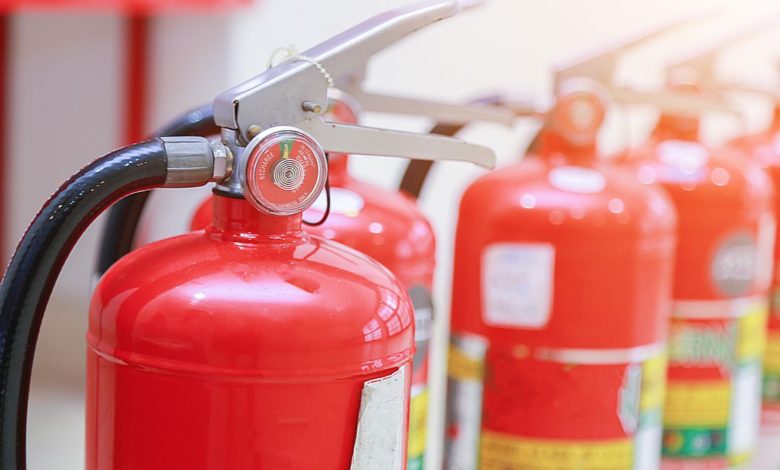
Fire extinguishers can stop small accidents from turning into full-blown catastrophes. Whether it starts with a pan of oil left to smoke while you’re checking on the kids or a plugged-in curling iron left beside a curtain, small blazes aren’t all that uncommon in the modern household. But fire can spread quickly — and a singed curtain or blackened pan are nothing compared to a seriously damaged home.
Fortunately, fire extinguishers can help stop that escalation, if you have the right kind, at the right place, at the right time. Problem is, many of us don’t know much about when and how to use fire extinguishers — if we even have one.
That’s where we come in. Here are all your questions about fire extinguishers answered.
Are there different types of fire extinguishers?
You bet there are. When you shop for fire extinguishers, they come with classifications (A, B, C, D and K) corresponding to which fires the model puts out. Here’s a basic breakdown of each letter represents:
A: Fires from wood, cotton, and cloth
B: Flammable liquids (cooking sprays, gasoline, etc.)
C: Fires resulting from live electricity
D: Flammable metals
K: Cooking oils (restaurants must have these kinds)
Some extinguishers will put out a variety of fires. It is not uncommon for some to have A, B, and C capabilities. It indicates they can put out all common kinds of household fires.
Moreover, Underwriters Laboratories measures the effectiveness of each extinguisher relative to the type of fire they put out. When you read a label, it might say the unit has a 3-A rating. The higher the numeric rating, the more effective it is at putting out a type of fire.
Does weight matter?
Fire extinguishers do come in different sizes. Generally, the heavier it is, the more extinguishing power it provides. However, wielding a 10-pound model in the midst of an already chaotic moment might be a little more than you want to handle. Striking the right balance between size and functionality is important — and the right choice will largely depend on what you feel comfortable handling.
For specific areas, you may consider smaller units — such as 5-pound canisters for the kitchen. These are easier to grab and maneuver, making it easier to put out a small fire. Some even attach above the stove. If you go this route, buy one that has pressured cans that pop open from the heat of the flames, releasing baking soda.
You can also buy even smaller (2-pound models) for your vehicle. It is a wise option to have on hand in case your car engine catches on fire.
How many extinguishers should I have in my home?
You should have at least one near your kitchen, where most common house fires start. If you live in a multilevel home, consider having one for each level of your home. Along with placing one in the kitchen, have one near the exit of your house as well. It can ensure a safer getaway if flames are close to your house’s entry points.
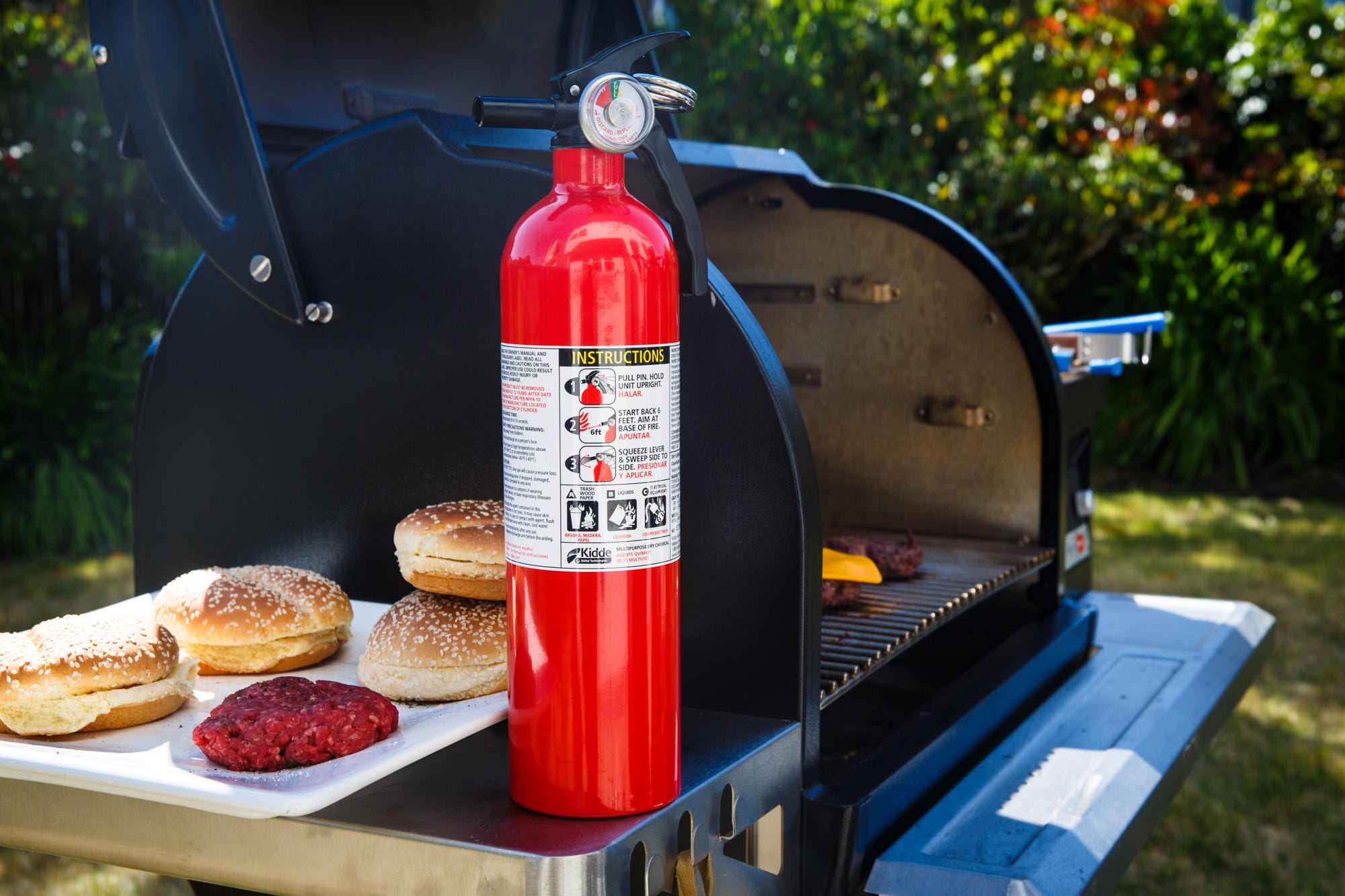
Josh Miller/CNET
How do I use them?
Use the PASS method to put out a fire. To start, you want to stand 6 to 8 feet away from the flame. Next, remove the pin to operate. Aim the extinguisher at the base of the fire, then squeeze the lever. As it discharges, use a sweeping motion (think side to side) to put out the flame.
After the fire goes out, watch it closely to ensure it does not start again. And if it does, follow the same steps.
If the fire gets out of control, the best course of action is to get to safety and allow emergency services to assist with fighting the flame.
How long do extinguishers last?
Some household fire extinguishers contain dry chemicals. Over time, these chemicals can lose their charge. Further, with compressed gas units, the seals loosen over time, resulting in leaks.
You can determine how long your unit lasts by examining the expiration date on the tag. Most models last anywhere from five to 15 years. And with some models, you can have them professionally recharged to extend their life.
To see if your extinguisher is in working condition, you need to inspect the pressure gauge (if applicable) located at the top of the extinguisher. If the needle is in the green area, then it should work. Moving forward, set up a time each month to inspect the pressure gauge. Doing so ensures your model will work when you need it the most.
Are extinguishers rechargeable?
There are multiple types of extinguishers available. Some are for one-time use. Once you discharge them, you will need to replace the unit, as they will not be fully operational as intended for emergencies.
Meanwhile, some models do have recharge capabilities. With these, you need to recharge them once you use them or during long periods of inactivity. To do so, a certified fire equipment dealer must do the recharge for you. You can use this directory to find a dealer near you.
Other considerations
Some extinguishers (cartridge-operated and carbon-dioxide) will not have gauges. For cartridge-operated units, check the indicator to ensure it is depressed. Meanwhile, in the case of carbon dioxide models, weigh the unit, then compare the weight to the information on the tag. If there is a substantial difference, then it indicates your extinguisher could be empty.
Another part of the monthly inspection involves checking the tamper seal. Inspect it to make sure it holds the pulling pin and does not have any damage.
You also want to check the hose for damages or any signs of leaks. If you notice some, and the model has recharge capabilities, take it to a certified specialist for repair.
You can also keep your home and your loved ones safe with these helpful guides:


